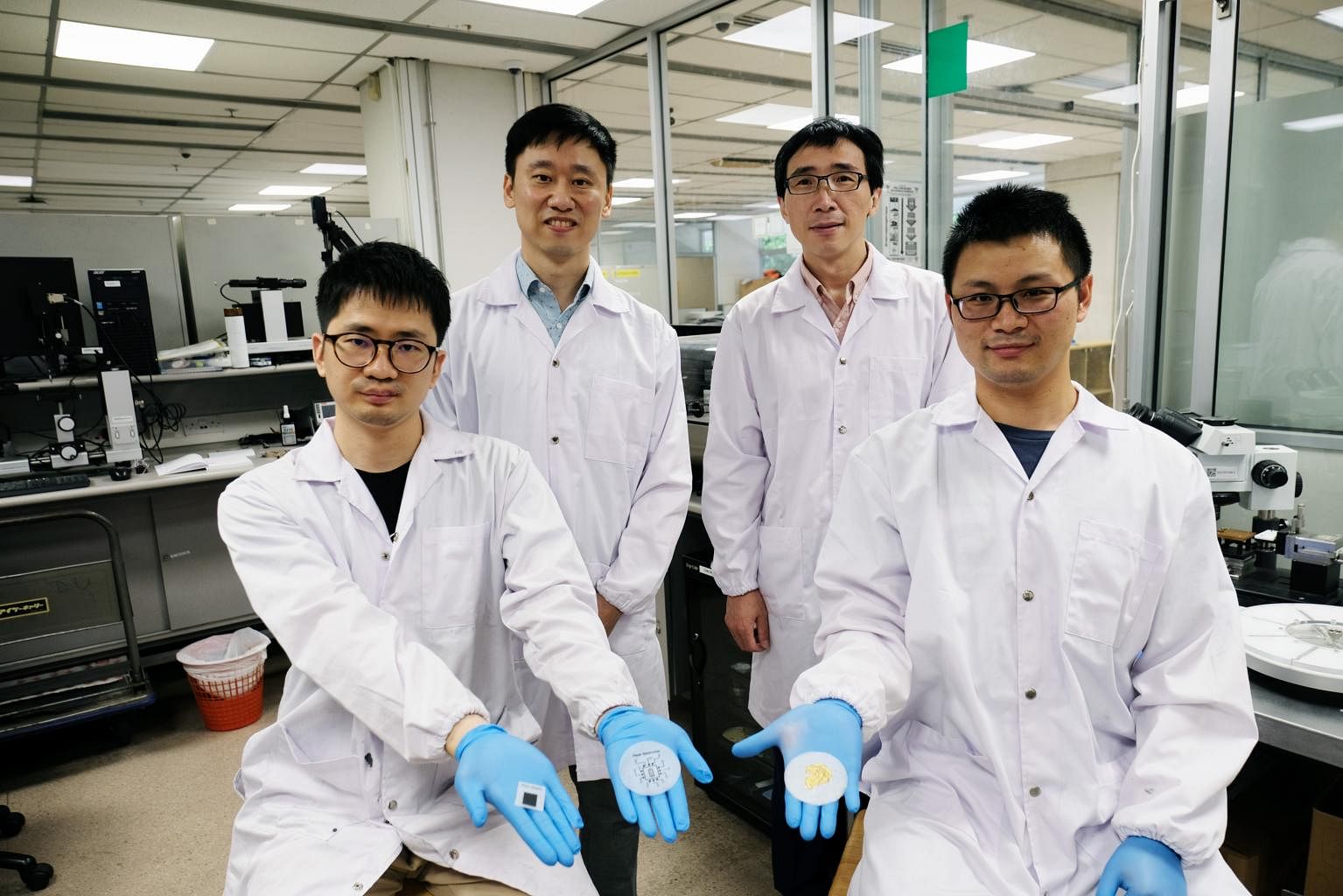NTU team invents biodegradable paper battery 10 times cheaper than lithium batteries
Sign up now: Get ST's newsletters delivered to your inbox
Follow topic:
SINGAPORE - Local scientists have invented a cheap, rechargeable and fully biodegradable paper battery that can someday be used to power wearables of the future.
This battery is made by screen printing an ink layer of manganese on one side of a sheet of strengthened paper, and a layer of zinc and conductive carbon on the other.
Developed by a team from Nanyang Technological University (NTU), it can hold a substantial amount of charge. For instance, a 4cm by 4cm printed paper battery about 0.4mm thick can power a small electric fan for at least 45 minutes.
Bending or twisting the battery does not interrupt the power supply, and larger battery sheets can be printed and cut up and used as individual, smaller batteries of different sizes and shapes for different uses.
Professor Fan Hongjin from the NTU School of Physical and Mathematical Sciences and the study's co-lead author, said: "(The versatility of use, durability and efficacy of these batteries) make our paper batteries ideal for integration in the sorts of flexible electronics that are gradually being developed."
Beyond the potential ergonomics of these batteries, the researchers said these batteries cost at least 10 times less to manufacture in the lab as compared with lithium-ion (Li-ion) batteries, the world's standard for rechargeable batteries.
This is because the primary electrodes use manganese and zinc, which are much cheaper and more common metals than lithium.
The entire battery can be safely degraded underground within a month, with the metals contributing to the mineral culture in the soil.
Assistant Professor Lee Seok Woo from the NTU School of Electrical and Electronic Engineering and the study's co-lead author said: "We believe the paper battery we have developed could potentially help with the electronic waste problem, given that our printed paper battery is non-toxic and does not require aluminium or plastic casings to encapsulate the battery components."
These batteries serve as an improvement over current Li-ion batteries that are commonly used.
Li-ion batteries contain toxic substances that when crushed, may leak and contaminate water sources. Furthermore, exhausted Li-ion batteries need to be disposed of safely because they can cause fires in the event of a leak.
The team is now focused on optimising the battery, which is in its early stages of development, and sees the battery being integrated with printed-on sensors at scale.

Prof Fan said: "As we move towards the future of the Internet of Things, many more of our everyday objects will need to be embedded with sensors that need to be powered in order to communicate with other objects.
"We believe that our battery is contributing to that future."
Three devices that may benefit from paper batteries
1. Electronic medical skin patches
Sufferers of chronic health conditions can wear a skin patch with sensors to measure vital signs or a drug delivery system that supplies medication when necessary.
For instance, an asthma patient's breathing patterns can be monitored round the clock by a medical patch that keeps track of wheezing. The patch can inform its wearer that they are about to get an asthma attack and remind them to use their inhaler.
Other uses might be insulin patches that can administer insulin at regular intervals based on blood glucose levels measured. Paper batteries can keep these patches thin and unobtrusive to wear.
2. GPS-tracking stickers
Although tracking devices, such as Tile and Apple's Airtags, are becoming more mainstream, they are relatively bulky additions and can trace only objects large enough to hold them, such as bags or wallets.
In the future, small GPS-tracking stickers integrated with thin paper batteries can be stuck onto small items - such as pens.
3. Thinner wearables
Most smartwatches today are relatively bulky as they require higher-capacity rechargeable lithium-ion batteries that can be the size of an SD memory card or bigger.
If powered by thin, flexible paper batteries, smart watches can have more creative configurations, such as batteries fitted into watch straps.
And as the metaverse, a 3D virtual environment, becomes increasingly important, demand for thinner and lighter virtual reality headsets and augmented reality glasses for everyday use will rise.

